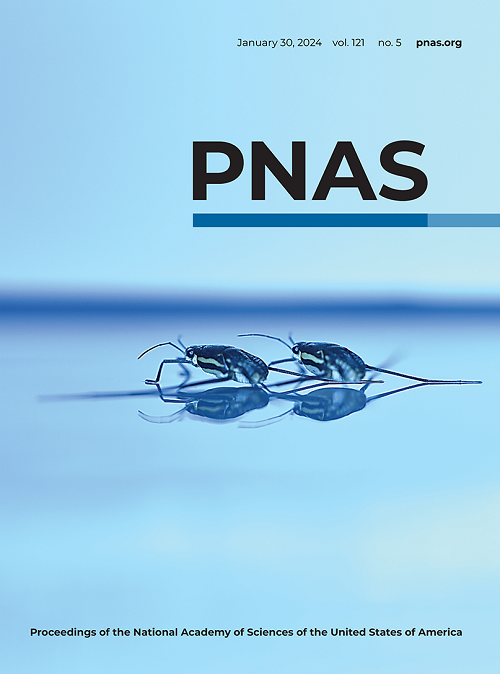巨噬细胞释放神经氨酸酶和cleaved calreticulin进行程序性细胞移除
IF 9.4
1区 综合性期刊
Q1 MULTIDISCIPLINARY SCIENCES
Proceedings of the National Academy of Sciences of the United States of America
Pub Date : 2025-05-21
DOI:10.1073/pnas.2426644122
引用次数: 0
摘要
钙网蛋白(CALR)主要是一种内质网伴侣蛋白,也在促进程序性细胞清除(PrCR)中发挥关键作用,作为巨噬细胞的“吃我”信号,指导它们识别和吞噬死亡、患病或不需要的细胞。最近的研究结果表明,巨噬细胞可以将自己的CALR转移到靶细胞上暴露的亚洲菜聚糖上,标记它们进行PrCR。尽管CALR在这一过程中起着至关重要的作用,但巨噬细胞分泌CALR及其在靶细胞上形成结合位点的分子机制尚不清楚。我们的研究结果表明,CALR在分泌时经历c端分裂,产生一个截断的形式,作为靶细胞可检测到的活性吃-me信号。我们确定组织蛋白酶是参与这一切割过程的潜在蛋白酶。此外,我们证明巨噬细胞释放神经氨酸酶,其修饰靶细胞表面并促进CALR结合。这些发现揭示了脂多糖(LPS)激活的巨噬细胞通过调节CALR切割和神经氨酸酶活性来标记PrCR靶细胞的协调机制。它们如何识别目标细胞仍然未知。本文章由计算机程序翻译,如有差异,请以英文原文为准。
Macrophages release neuraminidase and cleaved calreticulin for programmed cell removal
Calreticulin (CALR) is primarily an endoplasmic reticulum chaperone protein that also plays a key role in facilitating programmed cell removal (PrCR) by acting as an “eat-me” signal for macrophages, directing their recognition and engulfment of dying, diseased, or unwanted cells. Recent findings have demonstrated that macrophages can transfer their own CALR onto exposed asialoglycans on target cells, marking them for PrCR. Despite the critical role CALR plays in this process, the molecular mechanisms behind its secretion by macrophages and the formation of binding sites on target cells remain unclear. Our findings show that CALR undergoes C-terminal cleavage upon secretion, producing a truncated form that functions as the active eat-me signal detectable on target cells. We identify cathepsins as potential proteases involved in this cleavage process. Furthermore, we demonstrate that macrophages release neuraminidases, which modify the surface of target cells and facilitate CALR binding. These insights reveal a coordinated mechanism through which lipopolysaccharide (LPS)-activated macrophages regulate CALR cleavage and neuraminidase activity to mark target cells for PrCR. How they recognize the cells to be targeted remains unknown.
求助全文
通过发布文献求助,成功后即可免费获取论文全文。
去求助
来源期刊
CiteScore
19.00
自引率
0.90%
发文量
3575
审稿时长
2.5 months
期刊介绍:
The Proceedings of the National Academy of Sciences (PNAS), a peer-reviewed journal of the National Academy of Sciences (NAS), serves as an authoritative source for high-impact, original research across the biological, physical, and social sciences. With a global scope, the journal welcomes submissions from researchers worldwide, making it an inclusive platform for advancing scientific knowledge.

 求助内容:
求助内容: 应助结果提醒方式:
应助结果提醒方式:


